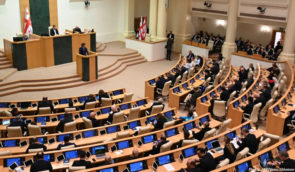More than third of children of vulnerable groups may become victims of human trafficking
Among the children aged 13-17 years, who belong to vulnerable groups, 40% are willing to accept at least one offer that could lead to drawing into human trafficking.
These are the results of the survey of vulnerable children and young people, as well as the expert interviews with representatives of the organizations working with these groups, conducted by GfK Ukraine.
The survey covered children in difficult life circumstances and orphans; children living in foster families and family-type orphanages; children, displaced from the military conflict zone; children with disabilities; street children; young people serving sentences in penitentiary facilities; young people studying in vocational schools.
According to the survey, the majority of children and young people of all vulnerable groups have heard about human trafficking and know where they should resort to in Ukraine and abroad if they are tried to be drawn into such situations. At the same time, children and youth are exposed to different types of risk behavior under the influence of circumstances and social environment.
Thus, among the nine surveyed vulnerable groups of children and young people, the biggest willingness to accept at least one offer that could lead to drawing into human trafficking was shown by young people aged 13-20 years, who are serving sentences in penitentiary facilities – 72%. In addition, such a willingness was demonstrated by more than half (53%) of young people studying in vocational schools and 51% of street children aged 13-17 years.
The lowest willingness to accept at least one offer that could lead to drawing into human trafficking was shown by children aged 13-17 years, who live in children’s homes of family type and the children of internally displaced persons – 22% each group.
Most often, the interviewed children and young people are willing to agree to work in a village or town where they live without a formal labor contract (up to 54% among different groups), to perform questionable or illegal well-paid work (up to 32%), to try drugs (up to 27%), to go home or to sit in a car of unfamiliar person (up to 20%).
60% among those who are willing to accept at least one risky offer are boys.
“Despite the relatively high general awareness of the interviewed children and young people about the problem of human trafficking, most of them, except for the orphans aged 13-17 years living in residential institutions, did not receive any relevant information on the prevention of human trafficking over past year. In combination with inclination to risk-taking behavior, this testifies to the need for a targeted information campaign on the prevention of trafficking among the vulnerable children and youth in Ukraine,” said Hanna Antonova, the coordinator of the IOM Ukraine Counter Trafficking Programme.
The personal interview survey was conducted in the territory of Ukraine except for Crimea and the territories of Donetsk and Luhansk regions, not controlled by the Government of Ukraine, in October-December 2015. A representative sample was 2,079 children and young people.








